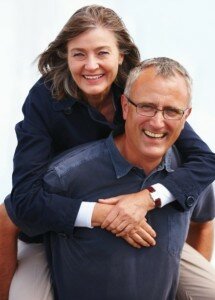 With the increasing acceptance of cosmetic procedures among men, a new phenomenon among the plastic surgery clientele has been on the rise: more couples are appearing together in surgeons’ offices across the country.
With the increasing acceptance of cosmetic procedures among men, a new phenomenon among the plastic surgery clientele has been on the rise: more couples are appearing together in surgeons’ offices across the country.
According to in the Pittsburgh Tribune-Review, America’s recovery from the recession has seen a resurgence of plastic surgery procedures. Women account for roughly 80 percent of plastic surgery patients, but the number of men has skyrocketed 88 percent from 1997 to 2010. The most popular procedures among men include Botox, liposuction, and rhinoplasty.
The article tells the story of Marsha and Mike Gavula, a couple from Evans City, PA, who do just about everything together. Recently, the 50-year-olds both stepped into a plastic surgeon’s office. Marsha has undergone chemical peels, dermabrasion, and other minimally invasive procedures, while Mike opted for Botox and wrinkle-filling injections for the first time on his fiftieth birthday.
One medical spa with three offices in the Pittsburgh area reports that it offers cosmetic procedures for nearly 30 couples annually, compared with a half-dozen couples in the mid-2000s.
What are some of the factors driving this increase in couples’ procedures?
- Plastic surgery no longer carries a stigma among men, particularly as the baby boomer generation ages.
- More options are available for those who don’t want a surgical procedure, as products like Botox can produce results comparable to facelifts.
- Many men wish to have a more youthful appearance in order to compete in a younger workplace. Injectable fillers such as Restylane and Artefill are fast, effective ways to rejuvenate your appearance.
- Recovery times for many procedures have lessened, thanks to cutting-edge techniques like VASER LipoSelection that reduce tissue trauma.
- Couples who have surgeries around the same time can “leapfrog” their procedures, alternating care and recovery.



